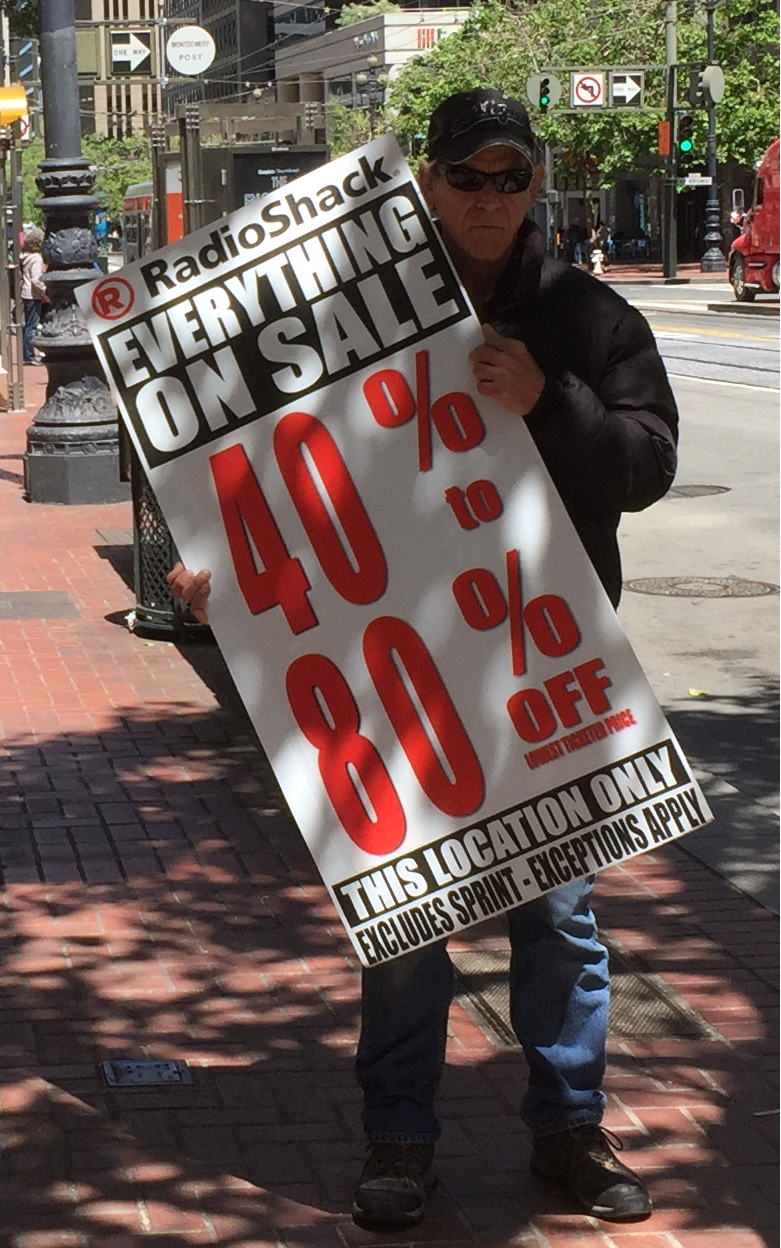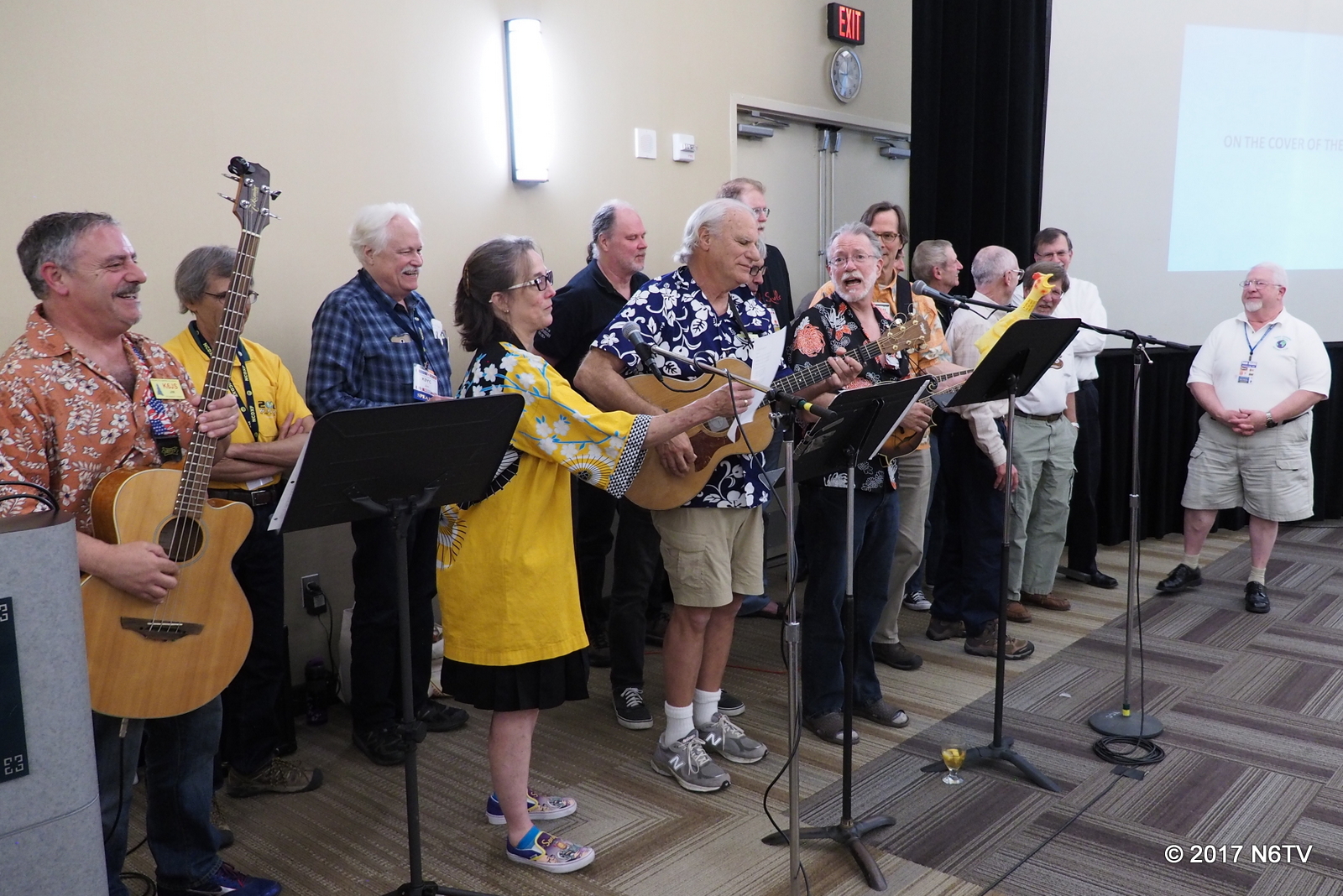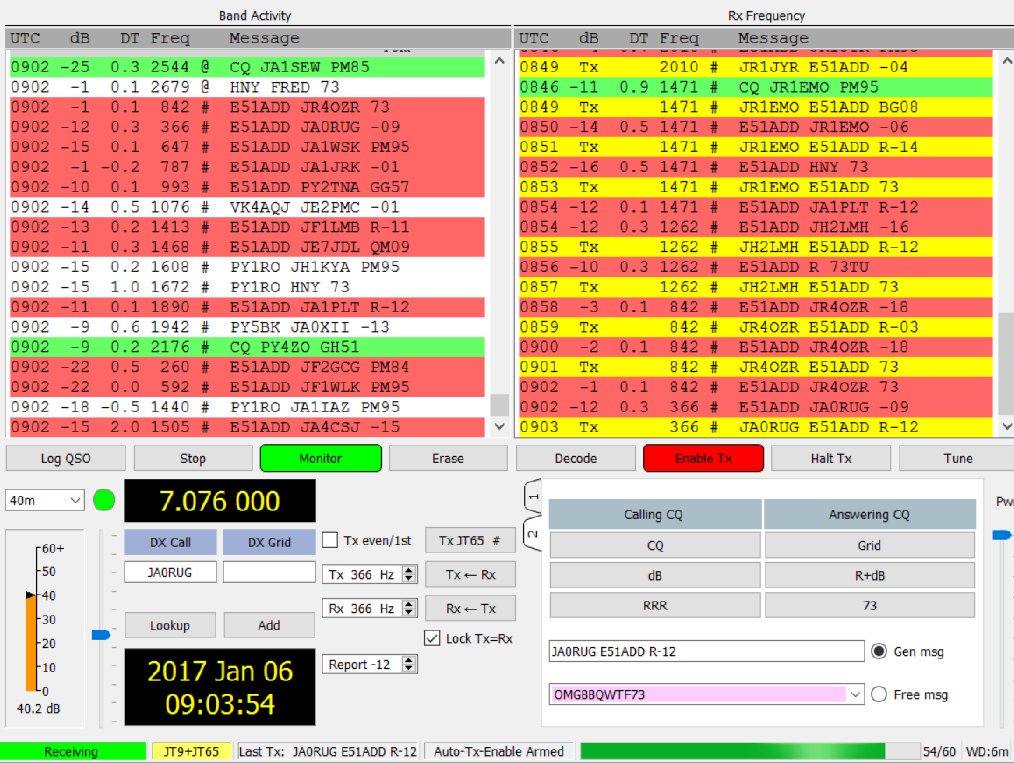 May 17, 2017 Editor: Paul Bourque, N1SFE | ||||
IN THIS ISSUE
Amateurs anywhere near Ohio are likely thinking about this week's Hamvention. This year the event drawing thousands moves to a new location near Xenia, Ohio. There's something for every facet of Amateur Radio, and manufacturers often use the occasion to announce new products or services. For contesters, in addition to the various sessions being held at the Hamvention grounds, a full slate of contest-related activities occur at the Dayton Crowne Plaza hotel. Contest University, the Contest Super Suite, and various contest organizations have formal and informal activities and presences. If you cannot attend, monitor Twitter and radio-related websites for announcements or live streams of ongoing events, such as those provided by W5KUB's Amateur Radio Roundtable and others. The ARRL Field Day event is coming up soon. Participating in a Field Day operation is a great way to find a radio club if you're not a member of one, meet new people in your club, or share your enthusiasm for the hobby with others. The ARRL Field Day Site Locator is standing by to help you find a location near you, or help advertise your club's operation. BUSTED QSOS George, K5KG, writes: "The N1MM+ IN7QPNE module now handles the Delaware QP. DE was added this year. All four are now supported: 7QP, IN, NE, and DE." "QSLs for the Martian New Year QSO Party, held May 5-6, should go to N2MA" (Tim, K3HX) Complete information for all contests follows the Conversation section May 18 May 19 May 20
May 21 May 22 May 24 May 25 May 26 May 27 May 28 May 31 Registration is now under way for the 2017 USA and International Amateur Radio Union (IARU) Region 2 championships of Amateur Radio Direction Finding (ARDF), which will take place August 3-6 near Harrison, Ohio. Rick, WW1ME, noted in the The ARRL Letter that "USA's ARDF Championships are an ideal opportunity to watch and learn from the best radio-orienteers in the US and from around the world, because visiting competitors from numerous other countries are expected to attend." It's not often that high frequency stock trading and explanations of coaxial cables and radio wave propagation are part of the same article, but here's one where the velocity of propagation can have some real financial consequences. Microwave links for communicating financial transactions beat fiber just enough to make them better. The article covers a wide range of issues related to optimizing latency between two locations. Remote Operation for contesting and operating in general just got a little easier. FlexRadio Systems has just announced its SmartLink remote access feature, to be included in the upcoming SmartSDR v2.0 software release. SmartLink makes it easier to "securely and easily operate your FLEX-6000 SDR over the Internet without the use of VPN or specialized hardware. SmartSDR v2.0 for Windows, iOS, and Maestro includes all of the necessary software for seamless remote operation. There will be live demonstrations of SmartLink in action at the 2017 Hamvention." There is also more information on the qrznow.com website. Sometimes a thing can be so bad that it earns grudging admiration for excelling at being bad. The Eico 753 HF Transceiver may qualify. According to Dennis, N6KI: "If you were a ham in the mid 1960s and have some spare reading time and want to ROFL, read the eham reviews about the Yugo of HF transceivers of that era. As a "starving" freshman college student, I ordered one from Lafayette Electronics catalog on a monthly payment plan my older graduate student room mate signed for as you had to be 21 and I had just turned 18...." U.S. customers interested in SOTAbeams antennas, filters, and testing tools, but uninterested in potential international shipping hassles can now order from the exclusive U.S. distributor, DX Engineering. DX Engineering will stock a number of SOTAbeam products, including the WSPRlite Antenna Performance Analysis System. If installing a logging program on your computer before a contest is just too much of a bother, you can still paper log, and then enter your contacts into a web form: http://www.b4h.net/cabforms/. Many popular contests are supported, see the web page for details. According to Scott, N3FJP, VHF Contest Log 5.4 is now available, supporting the brand new ARRL 222 MHz and Up Distance Contest. KE9V's Calling CQ email newsletter noted N4KGL's RaDAR - Rapid Amateur Radio Deployment Challenge activity in Florida. RaDAR operators take everything they need to operate in the field for four hours of a 24 hour period, including food and shelter. The catch is that operators are to move locations every 5 contacts by at least 1 kilometer if on foot. Rocket triggered lightning strikes are NOT a good way to protect your towers from high energy events. It IS an exciting way to perform lightning research. And make impressive videos. (Dennis, N6KI) For ARRL Contests, remember that there are layers of rules. The General Rules state the Precedence of rules:
RaDAR: Rapid Deployment Amateur Radio. Originated by ZS6BNE, it's the "concept for operating an amateur radio station anywhere, anytime and even in adverse environmental conditions." Operators are encouraged carry their gear as well as support items like food, water and shelter, to their operating locations, and during rallies or contests are encouraged to change locations after a certain number of contacts. Coordination is through a website, and RaDAR Challenge events occur on three weekends a year.
The World Wide Radio Operators Foundation (WWROF) published a video entitled "Dayton 2017 Contest Activities With K3LR" describing Contest University and other contest related activities coming up this week. (Ken, K4ZW) Tim, K3LR, also posted a full menu of options for watching Dayton activities. Starting Wednesday evening at 9pm EDT with a Ham Nation LIVE broadcast from the Contest Super Suite, and including certain Contest University sessions broadcast courtesy of ICOM,
At the recent International DX Convention in Visalia, California, the Contest Dinner featured a performance of the band "The Pin One Problem." Band members included K6JS on bass guitar, KU6F and others on vocals, K6SRZ on acoustic guitar, N6AN on electric guitar, N0AX on mandolin and vocals. Lyrics were by N0AX. Bob, N6TV, captured the moment and preserved it forever on YouTube. By clicking on the "Show More" button you can view the lyrics so you can follow and sing along. (Bob, N6TV) Some very inexpensive ESP32 hardware was used to transmit data over a 10 kilometer link via the 2.4 GHz band. The YouTube video covers the calculations for the link, and explains how the setup still conforms to the EU rules for unlicensed operation. Further links in the video provide information on how to gain access to lower-level packet operations of the ESP32 hardware. The WRTC 2018 qualification standings have been updated to include final CQWW scores. (Ulf, DL5AXX) Be in the Contesting Moment With conditions being what they are, there could be plenty of dull moments during a contest, even on an open band. It may be tempting to read a book, catch up on email, check the latest XKCD, or any other non-score-building activity. Resist. Instead, use the 2nd VFO to find another station to work. See if another band is open. Only concentrate on activities that have a chance of increasing your score. It hasn't been prudent to use Microsoft Windows XP since support for patches ended on April 8, 2014. The impact of this week's ransomware virus has compelled Microsoft to release a security patch for this obsolete operating system. According to Bob, N6TV, "In light of all the damage caused by the WannaCry ransomware, including many out-of-service Windows XP systems that many of us may still use on at least once computer, Microsoft has issued Security Patch KB4012598. You can go to the Microsoft web site (https://www.microsoft.com/en-us) and enter "KB4012598" in the Search box at the top to find it, or you can use this direct link to the software catalog page. The patch is a simple program (.exe file) that you download, run once, and then reboot. To verify installation after reboot: Start, Control Panel, Add or Remove Programs. Check the *Show updates* box at the top, wait a bit, then scroll down to *Windows XP - Software Updates* at the bottom. You should see Security Update for Windows XP (KB4012598) at the bottom of the list." Using a technique called electric field tomography, researchers at Carnegie Mellon University can turn nearly any surface into a touch control. By spraying on an electrically conductive coating, then attaching electrodes to the perimeter of the area, touches to the surface can be detected and mapped with a one centimeter resolution. Imagine multi-function tuning knobs or an interactive compass rose for rotator controllers. (Dennis, N6KI) Mark, K6UFO, suggests: "I was using the Great Circle Mapper the other day to visualize directions and paths into Europe. If you don't know the Airport codes, it has a search function, it also can show Lat/Long of starting and ending points, and several map options." When roving for VHF/UHF Contests, or if you're lost during the Stew Perry Contest but found an awesome spot to put up your 160 meter blimp, you're doing to need to know your Maidenhead Grid. Some GPS units will display Maidenhead grid locators, and Lynn, N7CFO, keeps a list of them. (Bob, K0NR, via VHFcontesting reflector) Increasing the Rate of JT Modes Rob, N7QT, is putting together a DXpedition to Mellish Reef later this year and we have been talking over the last few months about how to operate in the face of declining sunspot conditions which will make communication on the higher bands a challenge. In addition to shifting the focus lower in frequency to 40, 80, and 160 meters, we started to discuss the newer JT65 and JT9 modes. These modes do seem to provide the potential for communications when a band is closed to other modes, but because of the six minute QSO cycle time - a maximum rate of 10 Qs per hour - operator resources would seem to be better deployed on more open bands with traditional modes. However, over the past couple of months JT65 and JT9 operators and operating techniques have changed in a way that has re-opened the discussion about whether JT65 or JT9 would be appropriate for a DXpedition. It appears that more people have "discovered" the mode, whether by choice or by finding that no other circuit is working. Here in the Pacific Northwest, Rob notes that 20 meters is full of workable JT65 calls from Asia and EU from morning until late in the evening. There are some familiar calls, but many more calls that might represent the 'next layer' of stations he doesn't normally hear. He also notes that frequently there is a solid 4 kHz of activity. He often decodes more signals between 14.076 MHz and 14.078 MHz than there are signals in the entire CW band segment. A DXpedition's use of the JT modes could provide an All Time New One (ATNO) opportunity for many stations that otherwise would not have the chance. Rob notes that in recent weeks, for an estimated 20% of the contacts he's made on JT65, the other operators reduce the six minute QSO time by omitting one of the 'legs' of the QSO. As an example, instead of sending a grid square in response to a CQ, they'll now send the signal report, saving one minute. They're exchanging just as much information as Phone or CW contact. Other operators are choosing to combine the "RRR" exchange with the "73" exchange , by sending a single "RR 73" exchange , saving another 2 minutes.
Bengt, K7ADD, was using JT65 on a somewhat recent operation from E51 - The South and North Cook Islands, and noted that he was able to have two JT65 QSOs going simultaneously, by offsetting two instances of WSJT-X in transmit frequency. By doing so, he had the potential to increase the rate to 20 QSOs per hour. That's not such a bad rate if the band is otherwise dead. He tried three instances simultaneously, but managing three instances of WSJT-X was not ideal, and operators on the other end were confused by signal reports being given to multiple stations simultaneously. However, his experience provides hints of operating conventions that could make JT65 more practical from a rate perspective for DXpeditions. Cut the exchange sequence to four minutes, exchanging just signal reports. The DX station could handle multiple simultaneous JT65 mode QSOs - let's say six -- where the DX station transmits in one 1.5 KHz window, carriers 250 Hz apart. Space them even closer if using JT9. The DX station would use more power, as it's being split between a number of carriers -- JT65 and JT9 are not by necessity low power modes. Stations would call the DX in another 1.5 KHz window. Sure, the same frequency window could be used, as JT65 signals are time multiplexed, but it's likely that not all operators would understand to transmit on the correct even or odd time interval. It would make it easier on the DXpedition operators if there were a version of JT mode software that could handle the 6 simultaneous QSOs with only one instance, keeping track of the progress of individual contacts. Most of all, the plan for operating this way would be disseminated ahead of time, so that everyone has the opportunity to avoid operator confusion. With these changes, the theoretical maximum rate could be 90 QSOs per hour... even 40 QSOs per hour would be a good rate for a "closed" band. That's all for this time. See you in Dayton or Xenia, Ohio? Remember to send contesting related stories, book reviews, tips, techniques, press releases, errata, schematics, club information, pictures, stories, blog links, and predictions to contest-update@arrl.org 73, Brian N9ADG 18 May - 31 May 2017 An expanded, downloadable version of QST's Contest Corral in PDF format is available. Check the sponsor's Web site for information on operating time restrictions and other instructions. HF CONTESTS CWops Mini-CWT Test, May 17, 1300z to May 17, 1400z, May 17, 1900z to May 17, 2000z, May 18, 0300z to May 18, 0400z; CW; Bands: 160, 80, 40, 20, 15, 10m; Member: Name + Member No., non-Member: Name + (state/province/country); Logs due: May 20. VHF+ CONTESTS See Feld Hell Sprint, above May 18, 2017 May 19, 2017 May 20, 2017 May 21, 2017 May 22, 2017 May 27, 2017 May 31, 2017
ARRL Information Click here to advertise in this newsletter, space subject to availability. Your One-Stop Resource for Amateur Radio News and Information ARRL membership includes QST, Amateur Radio's most popular and informative journal, delivered to your mailbox each month. Subscribe to NCJ - the National Contest Journal. Published bimonthly, features articles by top contesters, letters, hints, statistics, scores, NA Sprint and QSO Parties. Subscribe to QEX - A Forum for Communications Experimenters. Published bimonthly, features technical articles, construction projects, columns and other items of interest to radio amateurs and communications professionals. Free of charge to ARRL members: Subscribe to The ARRL Letter (weekly digest of news and information), the ARES E-Letter (monthly public service and emergency communications news), Division and Section news -- and much more! ARRL offers a wide array of products to enhance your enjoyment of Amateur Radio. Visit the site often for new publications, specials and sales. Donate to the fund of your choice -- support programs not funded by member dues! Reprint permission can be obtained by sending email to permission@arrl.org with a description of the material and the reprint publication. ACKNOWLEDGEMENTS ARRL Contest Update wishes to acknowledge information from WA7BNM's Contest Calendar and SM3CER's Contest Calendar. | ||||









